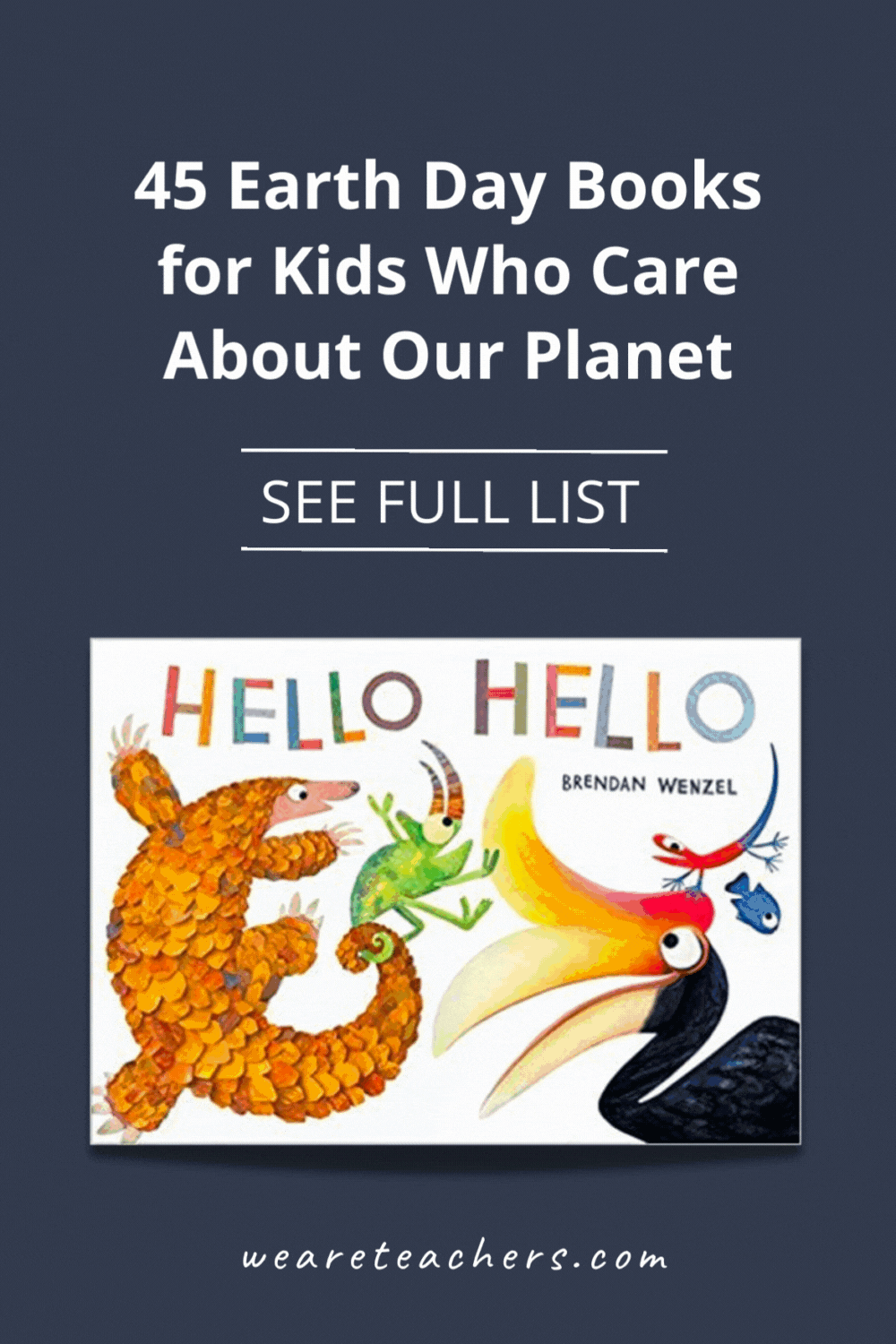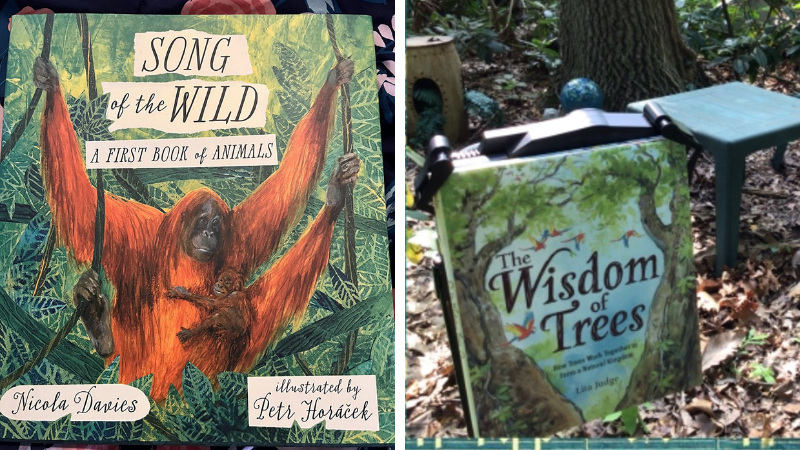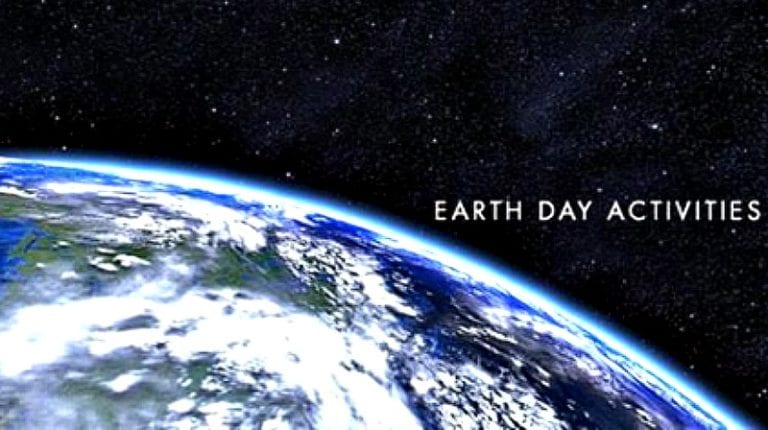Sharing books with kids about our natural world—and especially about what we can do to take care of it—is important all year long. But Earth Day, on April 22, is a good chance to pull out a nice big stack of books. Check out our favorite recent Earth Day books for kids to share with young environmentalists.
(Just a heads up, WeAreTeachers may collect a share of sales from the links on this page. We only recommend items our team loves!)
Earth Day Books for Kids About Animals
1. This Is the Nest That Robin Built by Denise Fleming
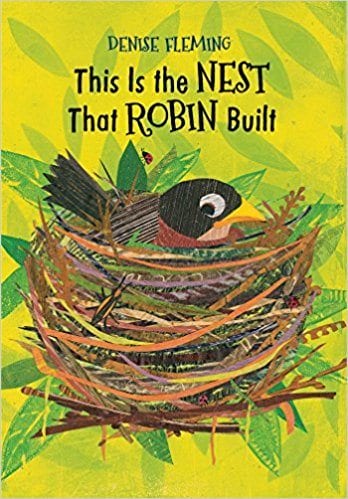
This text by a classic early childhood book author shows how a robin prepares its nest for its offspring’s arrival. This is a perfect addition to a study of birds or as a stand-alone read-aloud.
Buy it: This Is the Nest That Robin Built on Amazon
2. A Mammal Is an Animal by Lizzy Rockwell
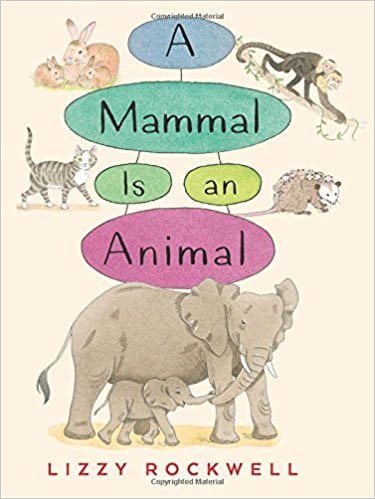
This introduction to animal classes features the straightforward text and illustrations for which the Rockwell family is best known. We love how the book ends with an interracial human (and therefore, mammalian) family, in which mom nurses a baby.
Buy it: A Mammal Is an Animal on Amazon
3. Hello Hello by Brendan Wenzel
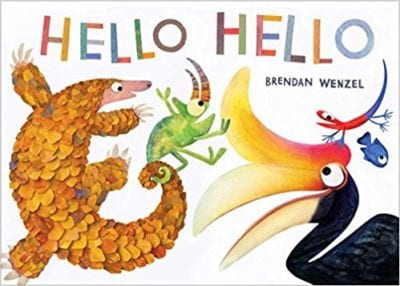
This book is deceptively simple yet chock-full of discussion opportunities. Each set of animals shown on these pages is linked in some way. Some share traits, such as color. Others share features and behaviors. The back matter names each creature and also lists its endangered species status.
Buy it: Hello Hello on Amazon
[contextly_auto_sidebar]
4. Chase the Moon, Tiny Turtle: A Hatchling’s Daring Race to the Sea by Kelly Jordan
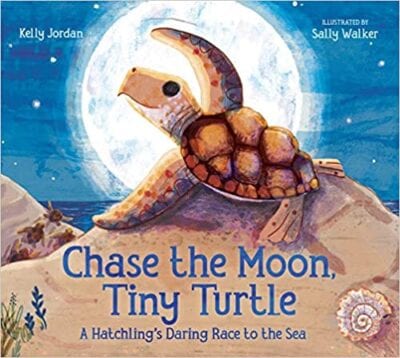
Baby sea turtles’ journey from sandy nest to open ocean has to be one of the shortest yet most harrowing in nature. This poetic story is brief enough for littles but can be appreciated on many levels—and gives kids great practice making inferences based on the pictures too.
Buy it: Chase the Moon, Tiny Turtle on Amazon
5. Song of the Wild: A First Book of Animals by Nicola Davies
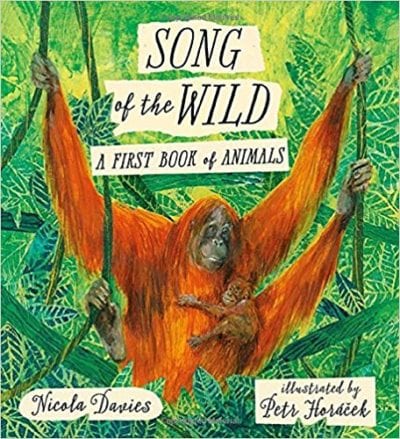
This book has so many beautiful poems and illustrations celebrating the animal kingdom. Just try to decide which ones to share with students! From descriptions of different species to odes to animal behaviors, this is one of those Earth Day books for kids that has possibilities for curriculum tie-ins.
Buy it: Song of the Wild on Amazon
6. Conservation for Kids series by Charlotte Milner
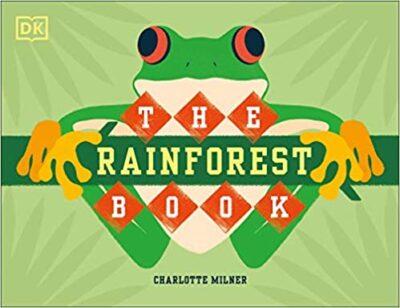
With their engaging tone and fascinating facts, these Earth Day books for kids raise students’ awareness about specific animals and ecosystems through a Q&A format. Not a bee or bat enthusiast? You might be after reading Milner’s odes to these creatures!
Buy it: Conservation for Kids series on Amazon
7. A Place to Start a Family: Poems About Creatures That Build by David L. Harrison
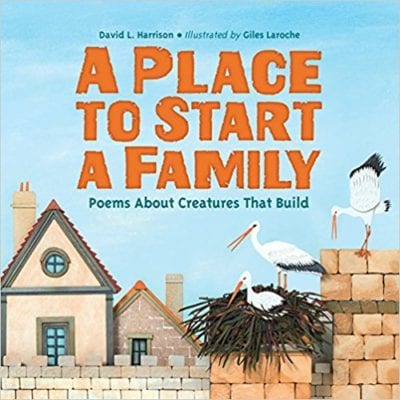
We love Earth Day books for kids that combine a unique angle on a topic with excellent vocabulary and informative content. This winning poetry collection describes the building habits of different species, from prairie dogs to paper wasps. Back matter includes more information to help you answer your students’ questions.
Buy it: A Place to Start a Family on Amazon
8. Animals by the Numbers: A Book of Animal Infographics by Steve Jenkins
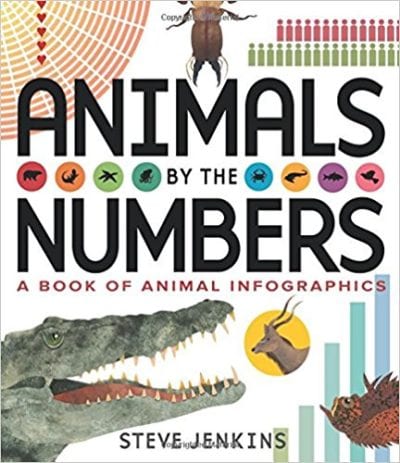
For students interested in numerical data, this book is a treasure trove. Steve Jenkins supplements standard statistics with lots of “wow!” and “gross!” facts to hold students’ interest. There are lots of charts, graphs, and other visual features. Students can also practice different ways of gathering information from a nonfiction text.
Buy it: Animals by the Numbers on Amazon
9. Butterfly for a King by Susan L. Roth and Cindy Trumbore
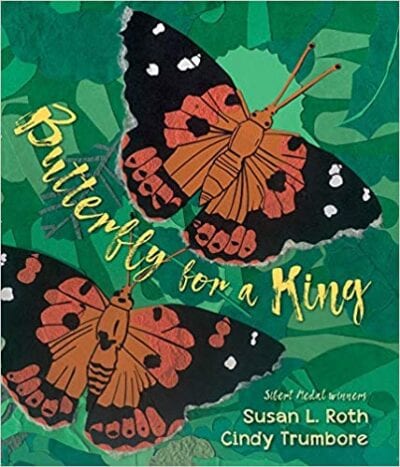
This story of Hawaii’s state insect, the Kamehameha butterfly, introduces so many important ideas: how the insect arrived in Hawaii, its life cycle, its place in the ecosystem there, and how expert and citizen science efforts have played a key role in supporting the population.
Buy it: Butterfly for a King on Amazon
10. Beauty and the Beak: How Science, Technology, and a 3D-Printed Beak Rescued a Bald Eagle by Deborah Lee Rose and Jane Veltkamp
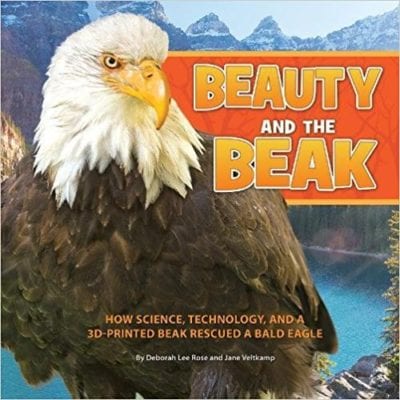
The title captures the amazing story the book tells. It opens with plenty of information and stunning photos of the United States’ national bird. It also tells about the tragic hunting event that destroyed a young eagle’s beak and how a creative and dedicated raptor biologist took up the bird’s cause.
Buy it: Beauty and the Beak on Amazon
11. Follow Those Zebras: Solving a Migration Mystery by Sandra Markle
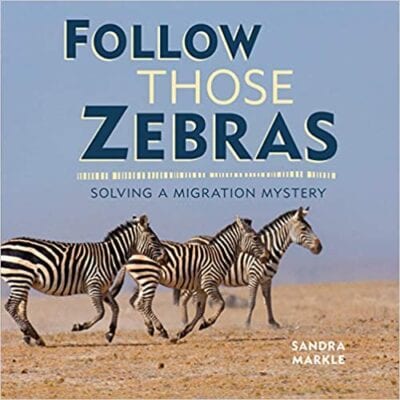
How does an entire herd of zebras just disappear? Informational text guru Sandra Markle takes readers on a team of scientists’ journey to solve a fascinating mystery. Help students make connections between animal behavior, ecosystem characteristics, and environmental challenges like climate change.
Buy it: Follow Those Zebras on Amazon
Earth Day Books for Kids About Plants
12. Food for the Future: Sustainable Farms Around the World by Mia Wenjen
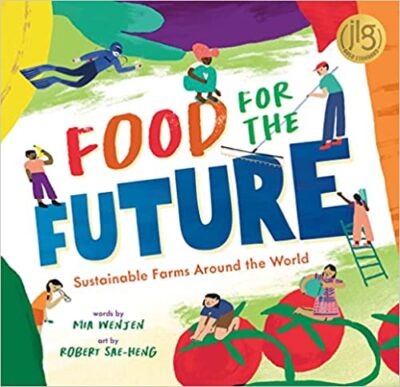
Stretch kids’ thinking with this fascinating look at what farming can mean. From salt farms to oyster farms to mushroom farms—even vertical gardens!—there are so many cool possibilities for sustainable farming happening right now all over the world. We definitely want to follow up a read-aloud of this title with showing kids photos and videos of the farms mentioned.
Buy it: Food for the Future on Amazon
13. Nell Plants a Tree by Anne Wynter
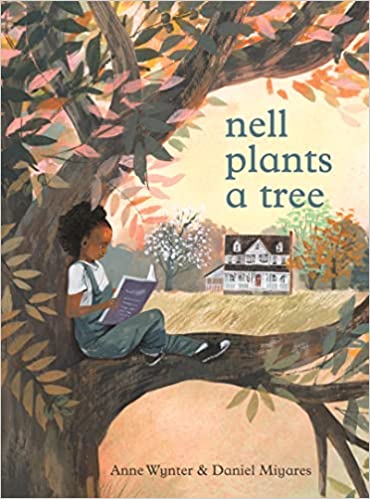
Generations before a majestic pecan tree provides a family with delicious nuts and a memorable place to play, a young girl sprouted a pecan, planted a seed, and tended a seedling. The author’s note encourages kids to wonder about and be grateful for the trees that were planted before their time. Pair this with an Earth Day tree-planting activity.
Buy it: Nell Plants a Tree on Amazon
14. Eco Girl by Ken Wilson-Max
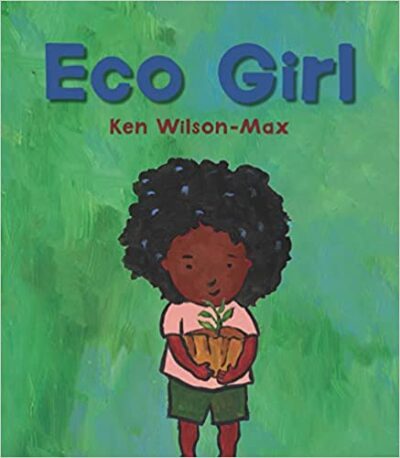
Eve lives next to the forest in Africa and dreams of being a baobab tree. Eve’s grandmother gives her a young tree for her birthday and helps her plant it next to the trees planted by her other family members. The author’s note can pique kids’ interest about the Great Green Wall in Africa.
Buy it: Eco Girl on Amazon
15. Gorilla Gardener: How To Help Nature Take Over the World by John Seven
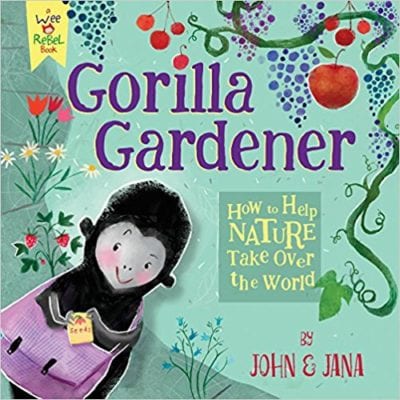
What starts as a simple summary of how to make a “seed bomb” quickly turns fantastical. Gorilla Gardener imagines a world where everyone—even grumpy grown-ups—plays outside among the plants. Back matter brings the text back to facts about planting. It also provides a summary of the (actual) guerrilla gardening movement. This is a unique and fun read-aloud. It will definitely inspire class planting projects.
Buy it: Gorilla Gardener on Amazon
16. Zee Grows a Tree by Elizabeth Rusch
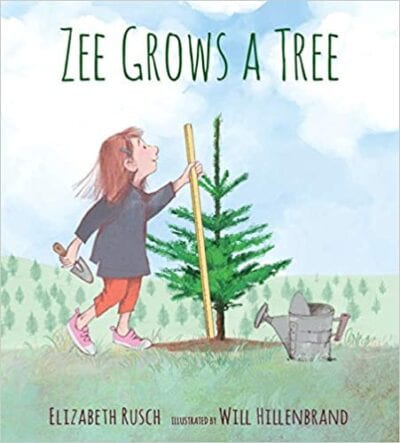
We love, love, love this story of how a little girl’s growth connects to the growth of her Douglas fir tree. Younger kids love the story, and there are lots of additional facts for older students.
Buy it: Zee Grows a Tree on Amazon
17. Seeds by Carme Lemniscates
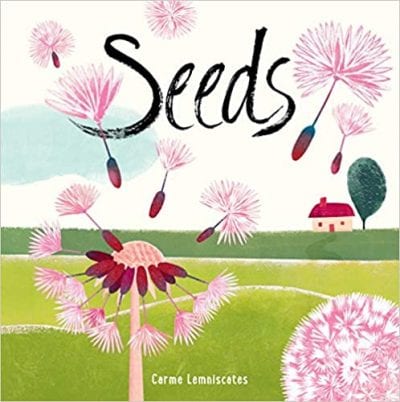
Seeds hold tremendous potential, both scientifically and metaphorically. One pumpkin seed can grow a dozen new pumpkins, each packed with hundreds more seeds. One act of kindness can be the seed of infinite happiness. This title is as compact but powerful as the seeds it celebrates.
Buy it: Seeds on Amazon
18. The Things That I Love About Trees by Chris Butterworth
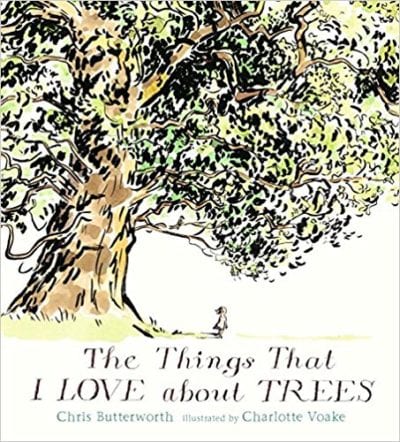
This book masters the delicate balance between poetic and informational. Muted watercolor and ink illustrations show a plum tree throughout the seasons of a year. The main text describes the features the narrator loves, while the smaller text adds interesting facts. The simple ideas for games and activities involving trees at the end are the perfect final touch.
Buy it: The Things That I Love About Trees on Amazon
19. Drawn From Nature by Helen Ahpornsiri
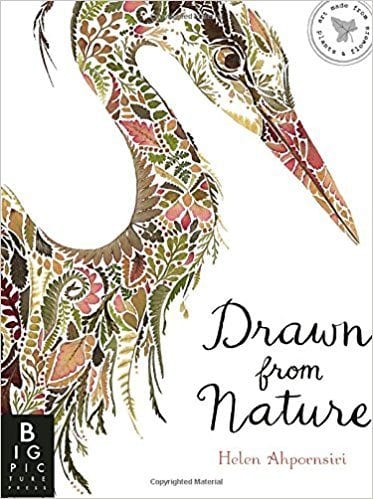
This book brings new meaning to “natural beauty.” Illustrations of various flora and fauna are made totally out of pressed flowers and leaves for a distinctive and mesmerizing effect. Give students a lot of time to pore over this one.
Buy it: Drawn From Nature on Amazon
20. A Seed Is the Start by Melissa Stewart
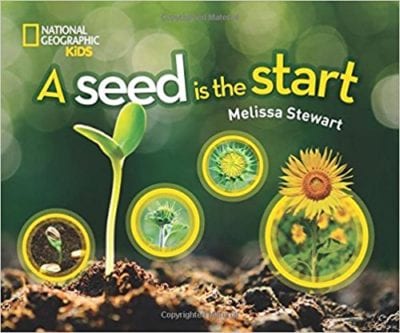
Another solid National Geographic Kids title, with their signature engaging vocabulary and top-notch photographs. This primer on plant life is an asset to any science unit.
Buy it: A Seed Is the Start on Amazon
21. The Wisdom of Trees: How Trees Work Together to Form a Natural Kingdom by Lita Judge
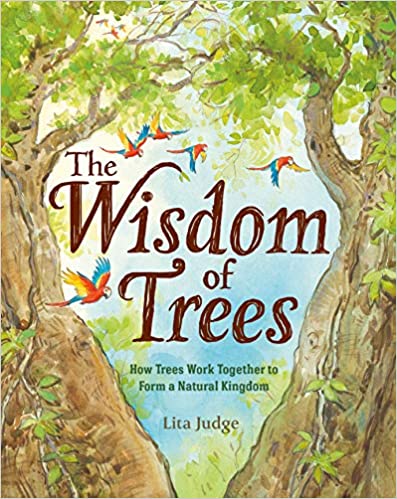
What would trees say if they could talk? This poetry and informational text combo gets students thinking about the power of trees at all stages of their lifespans. It’ll give students new ideas to consider on a walk in the forest.
Buy it: The Wisdom of Trees on Amazon
22. Let’s Eat! Sustainable Food for a Hungry Planet by Kimberley Veness (Grades 3–8)
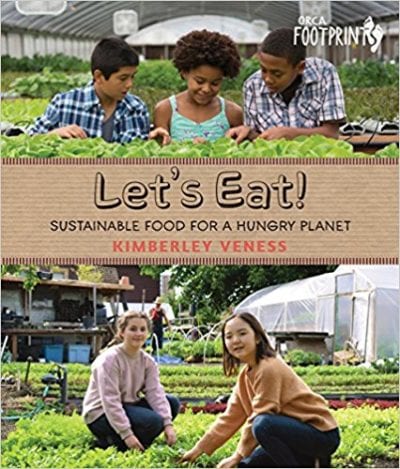
If you’re looking for Earth Day books for kids that teach about sustainable food, check out this title. It lays out historic and current perspectives on agriculture for middle grade students in an engaging format. With a good balance of photos, conceptual information, and memorable facts, this book will definitely get kids thinking about what’s on their plates. (Don’t miss the rest of the titles in the Orca Footprints series, also.)
Buy it: Let’s Eat! Sustainable Food for a Hungry Planet on Amazon
Earth Day Books for Kids About Caring for the Environment
23. Berry Song by Michaela Goade
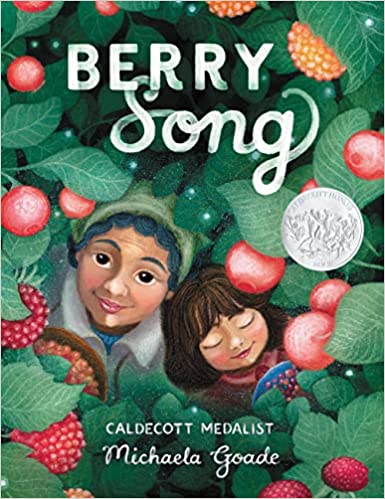
This Caldecott Honor title belongs in every classroom. A child and her grandmother celebrate the delicious wonders of each season and share Tlingit traditions of respecting nature in the Pacific Northwest.
Buy it: Berry Song on Amazon
24. Dear Earth by Isabel Otter
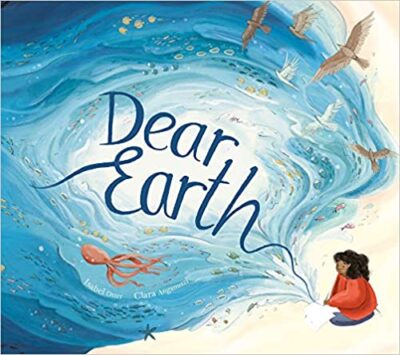
Add this to your list of Earth Day books with built-in curriculum tie-ins for kids. After hearing all about her grandfather’s adventures traveling the globe, Tessa writes a heartfelt love letter to our planet—which of course, your students can do too!
Buy it: Dear Earth on Amazon
25. Our Planet! There’s No Place Like Earth by Stacy McAnulty
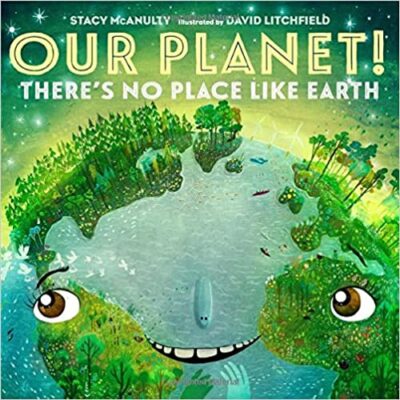
This is one of our new favorite earth day books for kids to celebrate Earth’s awesomeness! Plus, it’s a great option for explaining climate change—and how we can help slow it—in kid-friendly terms.
Buy it: Our Planet! There’s No Place Like Earth on Amazon
26. What a Waste: Trash, Recycling, and Protecting Our Planet by Jess French
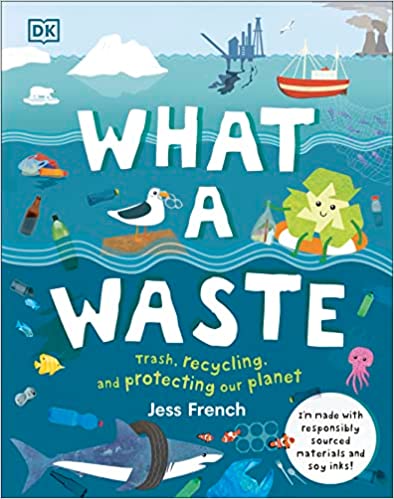
Each well-organized section builds the case for why too much trash is bad for our environment. Plus, there are tons of ideas about how kids can help. The bonus facts are memorable and meaningful, too: Did you know polluted air makes people do worse on math tests?
Buy it: What a Waste on Amazon
27. The Girl Who Heard the Music by Marni Fogelson and Mahani Teave
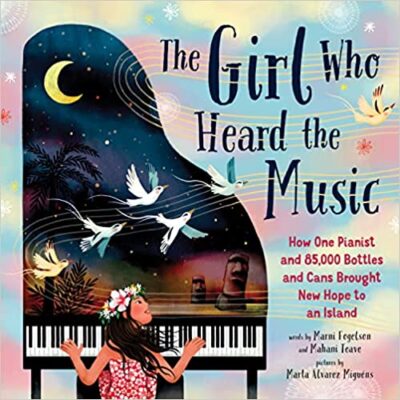
This impressive true story shares how pianist Mahani Teave imagined a more sustainable future for her home, Easter Island. After touring the world as a musician, she returned home to help build a music school with recycled materials, powered by renewable energy. Get kids thinking about how they could encourage environmental sustainability in their own communities.
Buy it: The Girl Who Heard the Music on Amazon
28. Rocket Says Clean Up! by Nathan Bryon
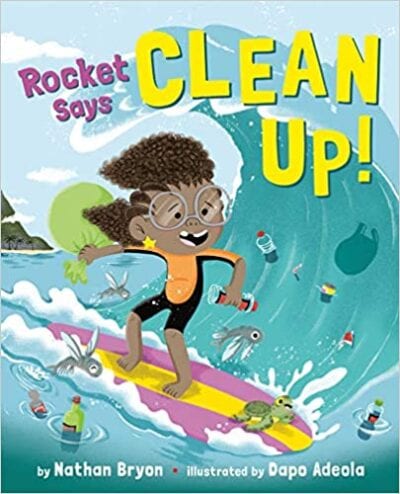
When Rocket finds a turtle tangled in a net on the beach, she does just what successful environmental activists do: She takes action. Rocket motivates those around her to help clean up the beach and protect nature—and will motivate students too.
Buy it: Rocket Says Clean Up! on Amazon
29. This Class Can Save the Planet by Stacy Tornio
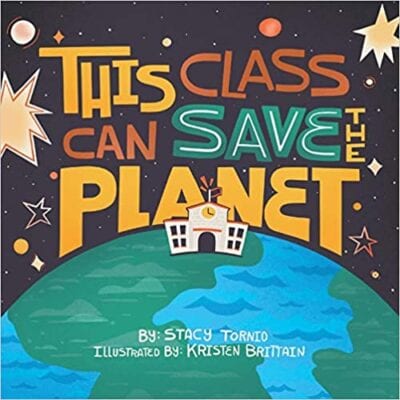
This encouraging and informative guide gives kids real-life ideas they can use right away to help the environment. For classrooms excited about doing their part to conserve resources and protect the Earth, this is a go-to guide!
Buy it: This Class Can Save the Planet on Amazon
30. My Friend Earth by Patricia MacLachlan
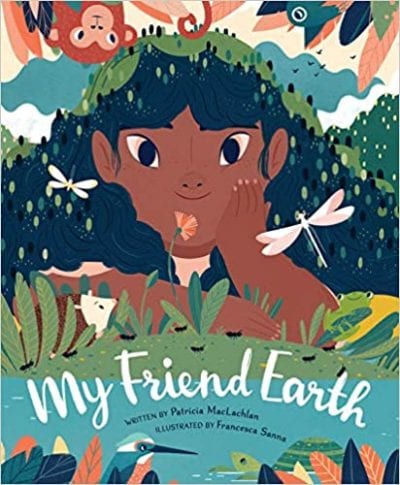
This fresh positioning of Earth as a friend instead of “Mother” will enthrall kids. Gorgeous die-cut pages span seasons and continents as “our friend Earth” cares for plants, animals, and the land—and asks its inhabitant to return the kindness.
Buy it: My Friend Earth on Amazon
31. A Stone Sat Still by Brendan Wenzel (Pre-K–3)
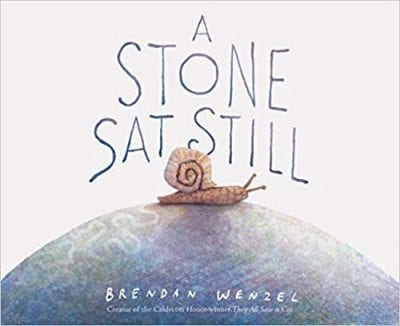
Kids are experts at being playful in nature. Brendan Wenzel does it again with this gorgeous title showing how the simplest of nature objects—a stone—can be so many things, depending on how you look at it.
Buy it: A Stone Sat Still on Amazon
32. Zonia’s Rain Forest by Juana Martínez-Neal
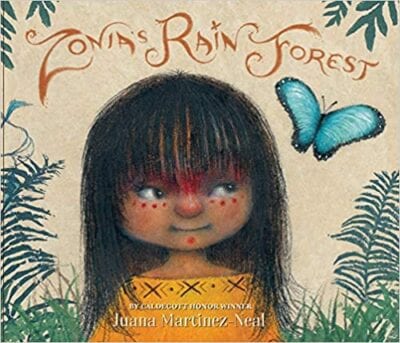
Zonia and her family are Asháninka, members of the largest Indigenous group of the Peruvian Amazon. Alarmed when she notices a deforested area in her beloved rain forest, she pledges to act to protect her home. This gorgeous book, from a Caldecott honoree, opens many important discussions.
Buy it: Zonia’s Rain Forest on Amazon
33. Penguins Don’t Wear Sweaters! by Marikka Tamura
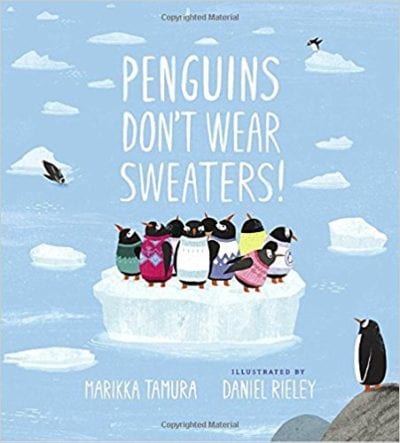
It starts as a cute story about penguins in woolens. But it becomes a chance to talk about the importance of seeking out a fully informed perspective. The author’s note explains how the book was inspired: a photo of penguins in sweaters popped up in her social media feed and the extra research she did to find out more about what’s actually most helpful for penguins after an oil spill.
Buy it: Penguins Don’t Wear Sweaters! on Amazon
34. Here and Now by Julia Denos (K–3)
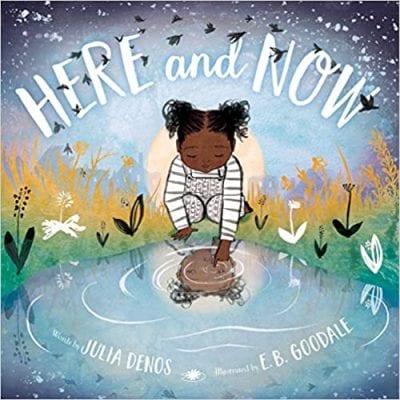
Encourage children to be present in their own “here and now” and appreciate the interconnectedness of experiences around the planet. This title is a lovely addition to a general collection of mindfulness books but particularly poignant for Earth Day.
Buy it: Here and Now on Amazon
35. Thank You, Earth: A Love Letter to Our Planet by April Pulley Sayre
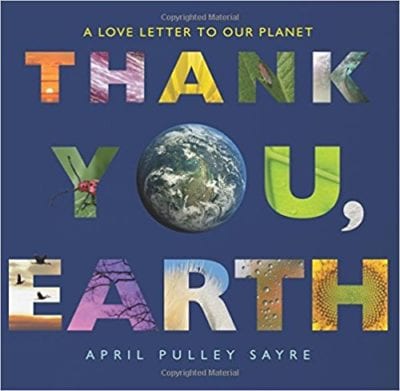
Wow. Just … wow. The photographs and word choice in this appreciation for Earth’s diverse beauty are powerful. It will be hard to choose a favorite picture, though you should certainly have students try. Use the author’s note as a piece of nonfiction short text for older students.
Buy it: Thank You, Earth: A Love Letter to Our Planet on Amazon
36. Every Color of Light by Hiroshi Osada
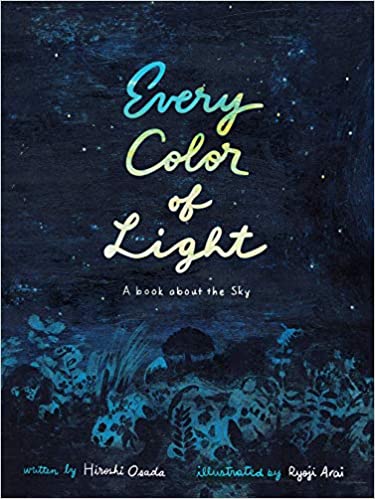
Experience a rainstorm and its bright aftermath with this quiet beauty of a book. It makes for a unique introduction to an art lesson about color and light in nature.
Buy it: Every Color of Light on Amazon
37. We Are Water Protectors by Carole Lindstrom
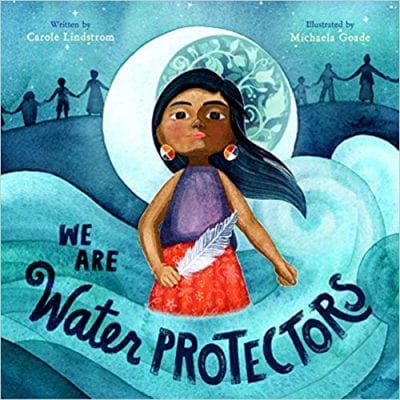
This #ownvoices title is written in honor of the many tribal nations that oppose oil pipelines from invading their lands and waterways. The lyrical text and compelling illustrations give students plenty to think and talk about. The “Earth Steward and Water Protector Pledge” included in the back matter is particularly perfect for setting Earth Day intentions.
Buy it: We Are Water Protectors on Amazon
38. Mario and the Hole in the Sky: How a Chemist Saved Our Planet by Elizabeth Rusch
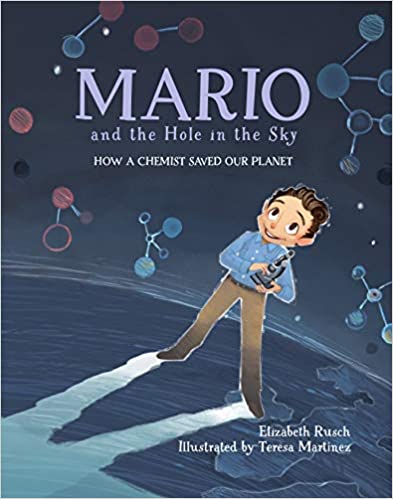
Mario Molino, a Mexican American chemist, changed the course of science and conservation by publicly highlighting the ozone crisis in the 1980s. Besides introducing kids to an important figure in environmental history, this is a great discussion-opener about current global warming concerns.
Buy it: Mario and the Hole in the Sky on Amazon
39. What Is a River? by Monika Vaicenavičiene
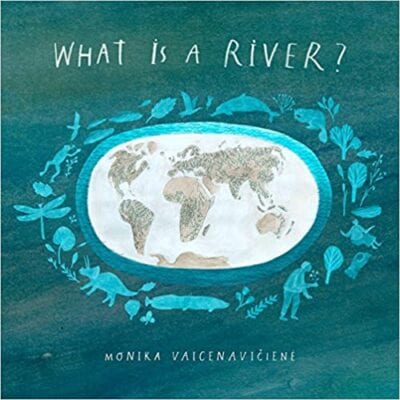
A river is a home, a meeting place, energy, flow, and so much more. This title will really get your class thinking and talking about features of the natural world in new ways. Inviting students’ own “What is …?” writing or projects would be a fantastic follow-up!
Buy it: What Is a River? on Amazon
40. All That Trash: The Story of the 1987 Garbage Barge and Our Problem With Stuff by Meghan McCarthy

Once again, Meghan McCarthy takes a little-known story from history and turns it into an informative and engaging tale for children. When local landfills were running out of space, a barge full of New York’s trash traveled over 6,000 miles looking for a dumping spot.
Buy it: All That Trash on Amazon
41. Plastic: Past, Present, and Future by Eun-ju Kim
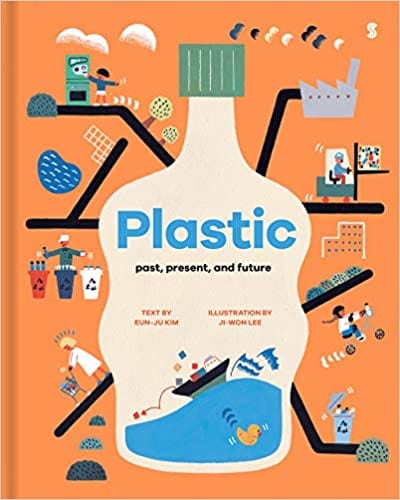
The effective mix of true stories, facts, and visual information will definitely build students’ background knowledge on the impact of plastic on our environment. You’ll also want to pull out sections to use as mentor texts for nonfiction or persuasive writing.
Buy it: Plastic: Past, Present, and Future on Amazon
42. Changing World: Cold Data for a Warming Planet by David Gibson
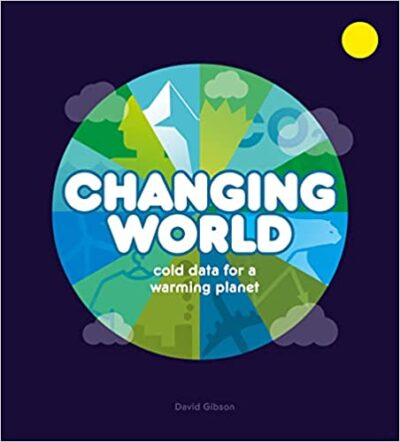
If you’re looking for Earth Day books for kids to tie in with a study of infographics, this is the title for you! It’s stuffed with appealing and meaningful visual representations of data about the impact of global warming, plastic use, renewable energy sources, and lots more.
Buy it: Changing World: Cold Data for a Warming Planet on Amazon
43. Old Enough To Make a Difference: Be Inspired by Real-Life Children Building a More Sustainable Future by Rebecca Hui
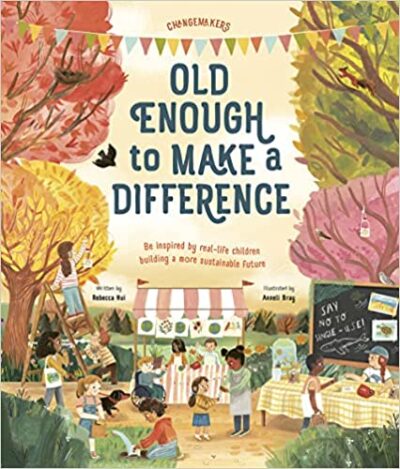
Full-page spreads profile kids who successfully sparked changes in their communities. From cutting down on paper waste to swapping to non-plastic drinking straws, to providing reusable sanitary napkins in areas impacted by poverty, committed kids can make a difference! This would be an awesome book for middle schoolers to study in small groups to jump-start research projects and create their own visions for environmentally conscious changes. Also check out the companion title Old Enough To Save the Planet by Loll Kirby.
Buy it: Old Enough To Make a Difference on Amazon
44. Little Monarchs by Jonathan Case
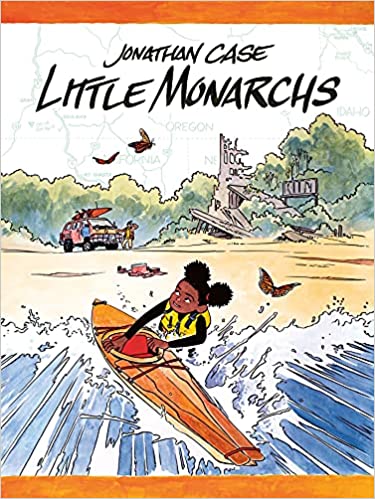
In a post-apocalyptic world in which “sun sickness” has caused mass destruction, 10-year-old Elvie investigates the power of monarch butterflies to help—and learns all about their migratory patterns in the process. Get students thinking about climate change and humans’ relationships with nature with this unique, well-researched graphic novel.
Buy it: Little Monarchs on Amazon
45. Global by Eoin Colfer and Andrew Donkin
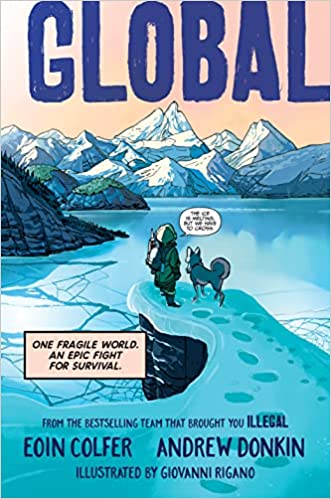
This graphic novel sensation brings global warming to life for kids in real time, via the compelling stories of two child protagonists. The Indian Ocean is rising rapidly, destroying Sami and his family’s fishing livelihood. Polar bears are stumbling into Yuki’s Arctic town, displaced by melting ice. What will each child do to help? This is a must-have Earth Day book for middle school kids.
Buy it: Global on Amazon
Want more book lists and classroom ideas? Be sure to subscribe to our newsletters!
Plus, check out our list of meaningful Earth Day activities.
